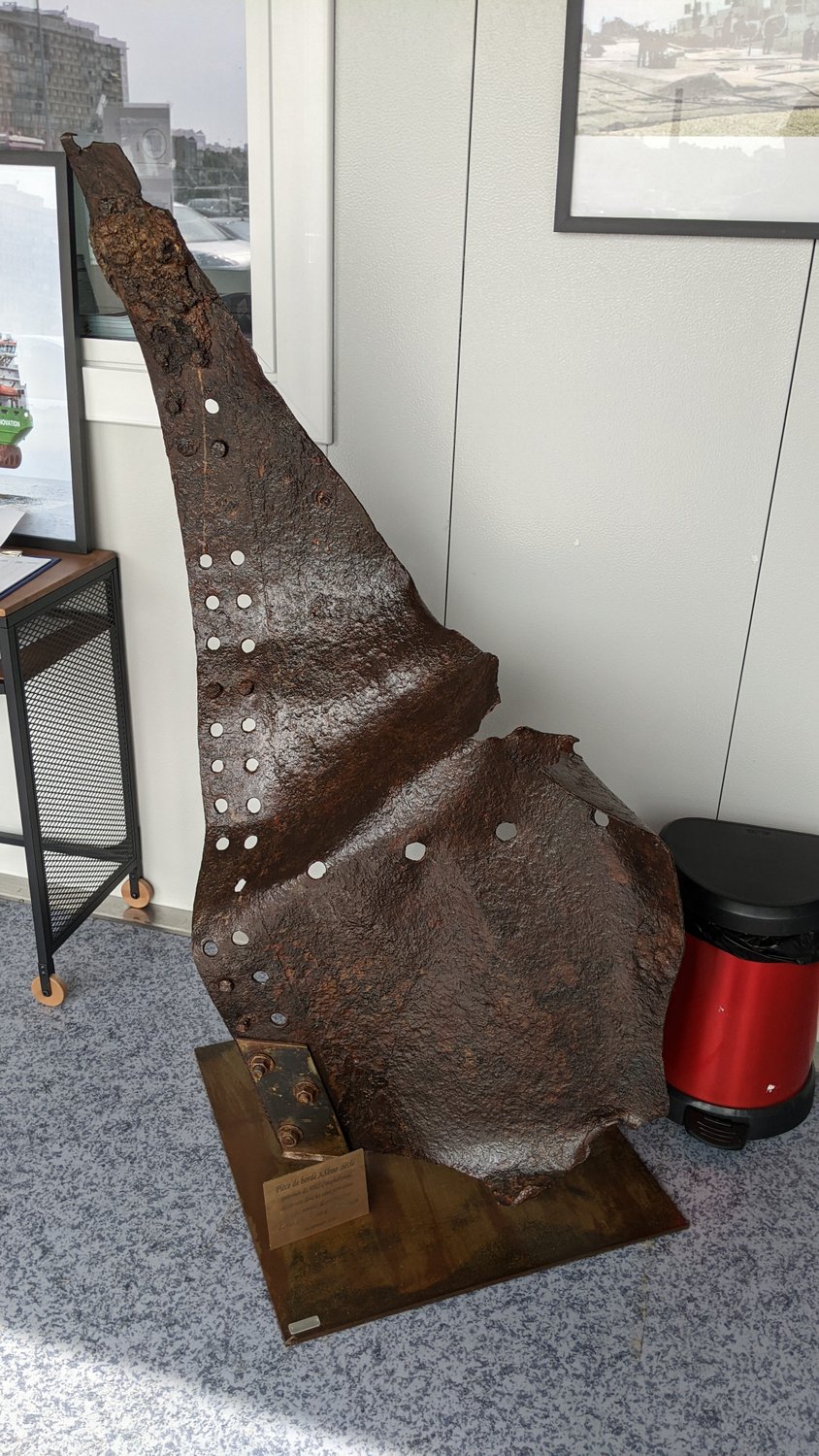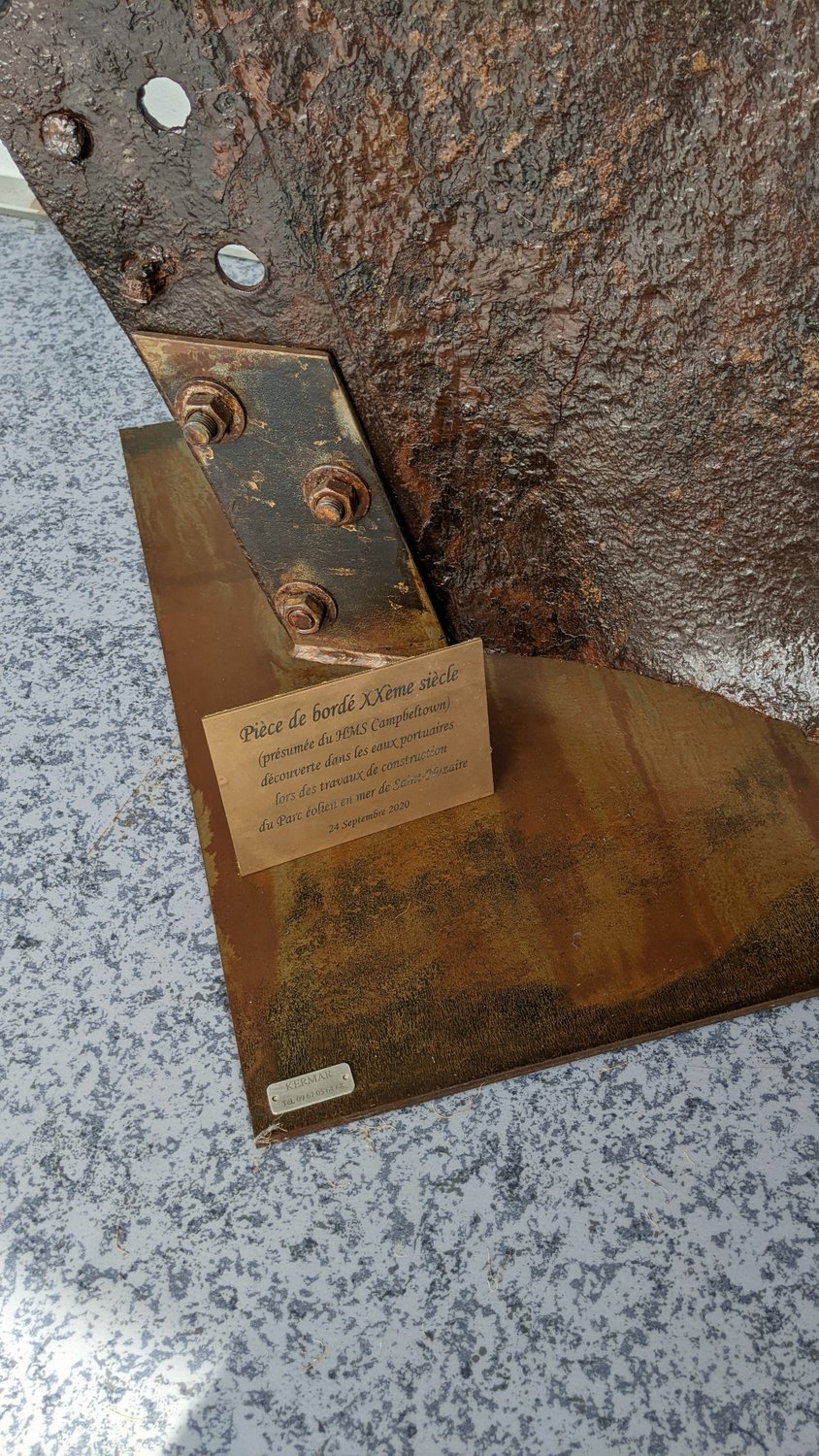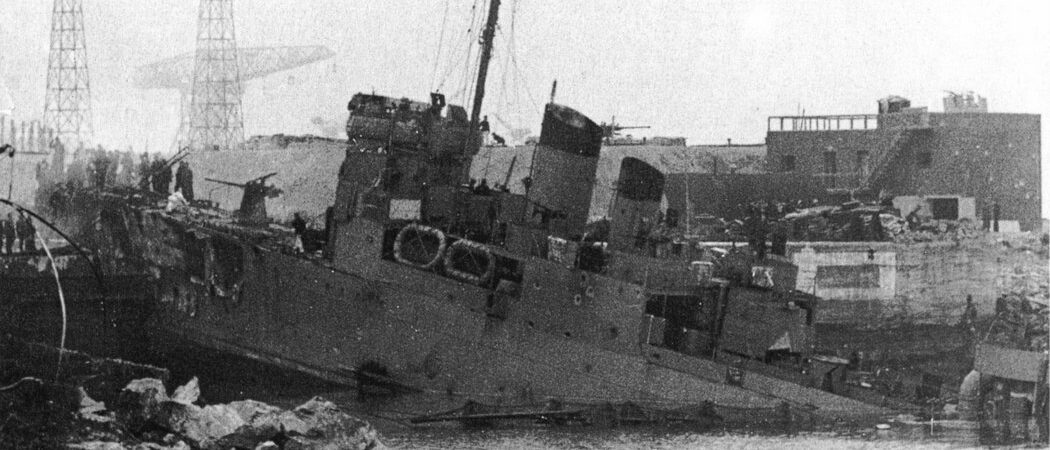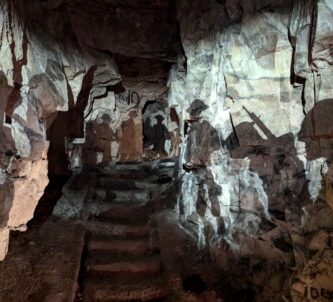A piece of wreckage, thought to be from HMS Campbeltown was discovered in 2020 on the seabed and is now awaiting a new home.
Other Saint-Nazaire Posts
When I was in Saint-Nazaire at the end of August 2022, I was told that a large piece of steel ship’s hull, probably from HMS Campbeltown, had been recently discovered buried in the silt around the entrance to the Joubert dock, and it was lying on the quayside by the East Lock (aka ‘Old Entrance’).
So I went to look for it. It was nowhere to be found, but then I spotted it in the reception of the Saint-Nazaire offshore wind farm office. It had been cleaned up and mounted on a plinth. A woman who was working alone in the office (it was a public holiday) told me that it was due to go to a museum in the UK but she didn’t know which one – a little mystery, n’est-ce pas ?

I began asking around when I got back to the UK, starting with the most obvious museum, the National Museum of the Royal Navy, but they knew nothing about it. Then at the end of September, all was revealed in a Commando Association Facebook post.
It turns out, the Commando Association (CA), who are hoping to build a dedicated Commando Museum in Spean Bridge*, Scotland, had heard about the ‘artefact’. They approached EDF Renouvelables, the lead partner in the consortium building offshore wind farms (details here) off the French Atlantic coast. EDF were doing the dredging and so they own the artefact under marine salvage law. They found it about 30 metres from the Joubert Dock gate, buried 20cms below the silt.
On 26 Sept, the Commando Association and EDF signed a long-term agreement loaning the artefact to the Commando Association for an indefinite period so that it can be put on display as a key exhibit in their new museum.

Meanwhile the CA has the relic in a secure location and is working to establish its provenance beyond doubt. Evidence of a traumatic event is clear from the buckled and torn shape of the metal, and the fact that a double row of rivets was blown out, but that’s not enough proof alone that it was from the hull of HMS Campbeltown.
The CA are asking any WW2 naval ship historians with detailed knowledge of the ship to contact them. As HMS Campbeltown was originally built at the Bath Iron Works, Maine in 1918 for the US Navy as USS Buchanan, a Wickes-class destroyer, any original design drawings would come in handy. I imagine also that if any surviving piece of hull from one of her sister ships were to be traced, it would be useful to compare in a metallurgy test.
It has been suggested to me that since the Commando Association doesn’t actually have a museum now – they had a gallery in the Spean Bridge Hotel but had to move it into a shipping container when the hotel changed ownership – this artefact should be displayed, even on a temporary basis, at the Saint-Nazaire Écomusée or, since HMS Campbeltown was a Royal Navy ship, in the Coastal Forces gallery of the National Museum of the Royal Navy at Priddy’s Hard.
While I understand the thinking and have some sympathy for it, I don’t think that’s the point. The Commando Association, through their own efforts, have it. Would you give somebody else the chance to be the first to show it off in their museum? I don’t think I would. It would be better for those institutions and other associated military museums (eg. the Army Museum) to support the CA in its logistics and fundraising and speed up their ambitions for a new museum so we can all see it sooner rather than later.
Declaration: I was on a self-driving press trip as a guest of Saint-Nazaire Tourisme.
* Spean Bridge is a village in Lochaber in the Scottish Highlands, close to the Commando Monument and the former Commando Training Centre at Achnacarry Castle.







